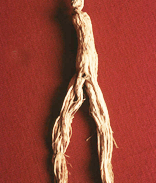Three months ago, I was having a conversation with a Indian friend. Somehow we talked about foods and herbs. Then she introduced to me a herb that has been existing here in Singapore, but known mostly by the Indians of Singapore.
The plant or the tree is called drumstick tree . I eventually went to The Little India of Singapore and bought some drumsticks and fresh leaves. Some of the pictures are shown here. They are inexpensive and so available, both air flown from India on a daily basis.
 Let me explain the wonders of this plant. It is the most unknown most nutritious plant, all the parts of this tree can be used as nutrition to the body. However, due to economic reasons, the leaves and the pod are used more widely.
Let me explain the wonders of this plant. It is the most unknown most nutritious plant, all the parts of this tree can be used as nutrition to the body. However, due to economic reasons, the leaves and the pod are used more widely.MORINGA OLEIFERA OR THE MIRACLE TREE
 The botanical name for this tree is MORINGA OLEIFERA.
The botanical name for this tree is MORINGA OLEIFERA.It is extremely rich in vitamins and minerals, amino acids so crucial for our body.
In addition, this plant contains anti-toxin and anti-oxidant materials which helps to strengthen the body’s immune system, for gout and arthritis, for lactating mothers, and much more.
It is of no wonder that this tree is known all over the world as the miracle tree.
 I found this tree has been planted in Singapore, one of the example is at a house in the east side of Singapore, near Bedok.
I found this tree has been planted in Singapore, one of the example is at a house in the east side of Singapore, near Bedok.The origin of this tree is from India, and was grown over thousand of years to treat various diseases and for nutritional supplements. This tree is known by different names in different parts of the world. Please see below for information.
If you compare the nutritional values of this plant with other natural foods, you will have some ideas how nutritious this plant is.
It is 3 times more iron than spinach
It is 4 times more vitamin A than carrot
It is 4 times more calcium than milk
It is 2 times more protein than milk
It is 3 times more potassium than banana
The vitamin contents of this tree are as follows:
Vitamin A, vitamin B1, Vitamin B2, Vitamin B3, Vitamin C, Calcium, Copper, Iron, magnesium, Phosphorous, Potassium, Zinc.
Amino acids are arginine, histidine, isoleucine, lysine,methionine, phenylalanine, threonine, tryptophan, valine
USES OF MORINGA OLEIFERA
The use of Moringa Oleifera are as follows:
• Strengthen the immune system
• Cleanses body from toxins and heavy metals
• Exterminate parasites in the intestines
• Support treatment during radiation and chemotherapy
• Support treatment during lack of appetite in children and adults
 • Help with osteoporosis treatment
• Help with osteoporosis treatment• Help with diabetes treatment
• Intestine infections
• Gum infections
• Prostate infections
 • Various skin disease
• Various skin disease• Breathing disease
• Headaches and migraines
• Arthritis
• Gout
• Hair loss
MORINGA SUPPLEMENTS
Consistent intake of Moringa will help the following supplement :
1. Prevent glaucoma and cataract
2. Treat insomnia
3. Increase sperm count and motility
4. Rebuild weak bones and prevent osteoporosis
 5. Enrich anemic blood, prevent anemia
5. Enrich anemic blood, prevent anemia6. Increase milk flow for lactating mothers, nourish breastfed babies
7. Decrease liver disorder
8. Relieve colds
9. Promote a healthy circulatory system
10. Provide anti-inflammatory effects
11. Combat malnutrition
12. Prevent childhood blindness
13. Promote normal serum cholesterol
14. Enhance red blood cells
 15. Mitigate the aging process
15. Mitigate the aging process16. Remove fine lines and wrinkles
17. Aid metabolism and digestion
18. Stimulate the brain and enhance mental alertness, alleviate stress
19. Improve strength and endurance
20. Ease the symptoms of menopause , hormonal changes and depression
 MORINGA IN VITAMIN FORMS
MORINGA IN VITAMIN FORMSI have bought several ready prepared Moringa Oleirfa in powder and tea bag forms. This is for those who have no available stocks of the tree or they are too busy to purchase the fresh ones on a regular basis.
These are in powder forms from 4 companies:
 2) Enjoymoringa.com
2) Enjoymoringa.com3) Themoringa.com
4) Moringaoleifera.org
5) moringa.com.my
After all the explanations, I would encourage you, the readers to introduce this plant into your diet, whether you take them in the fresh natural form, if available in your country, or to take then in vitamin forms.
You may read more from the following websites:
http://www.treesforlife.org/our-work/our-initiatives/moringa/names-of-moringa
http://www.treesforlife.org/our-work/our-initiatives/moringa
Other names for the Moringa in English include:
Drumstick tree, from the appearance of the long, slender, triangular seed pods.
Horseradish tree, from the taste of the leaves, which can serve as a rough substitute for horseradish.
 Ben oil tree, from the oil derived from the seeds
Ben oil tree, from the oil derived from the seeds The Chinese name of the Moringa (辣木), pronounced "la mu" in Putonghua and "lat mok" in Cantonese, means "spicy (hot) wood", and is reminiscent of the English name "horseradish tree".
In some Indian languages, the name is phonetically somewhat similar to "moringa", while in others it is quite different:
In Hindi it is called Munuga.
In Marathi is it called Shevga.
 In Kannada it is known as Nuggaeekayee.
In Kannada it is known as Nuggaeekayee. In Telugu it is called as Mulakkaya.
In Gujarati is it called Saragvo.
In Oriya is it called Munika.
In Bengali it is called Sojne danta.
 In Kerala state its known as Muringa Tree and the fruit called Muringakka in Malayalam.
In Kerala state its known as Muringa Tree and the fruit called Muringakka in Malayalam. In Nepali it is known as Sajiwan or Swejan.
In Guyana it is called Saijan
The Tagalog name, in the Philippines - Malunggay - is also phonetically similar to "moringa". In Ilocano, another Filipino language, its called Marungay. It is called "Kamunggay" in Bisaya.
In Haiti, the moringa is called the benzolive (or benzolivier).
In Nicaragua the plant is referred to as Marango.
 In Indonesian, the moringa is called kelor. In Javanese, it is called limaran.
In Indonesian, the moringa is called kelor. In Javanese, it is called limaran. 































































